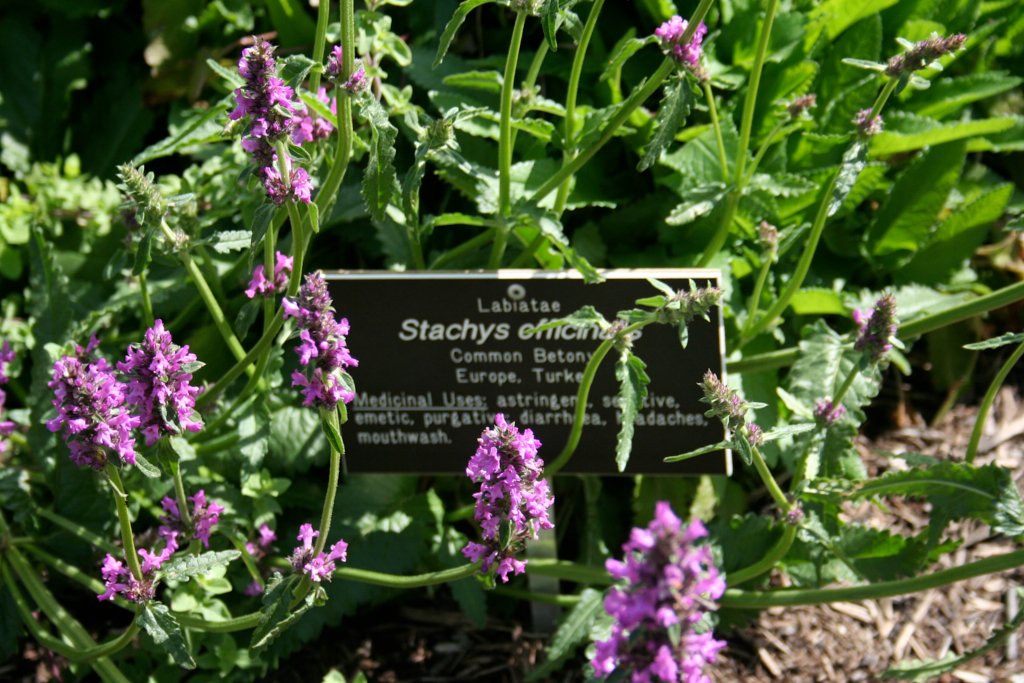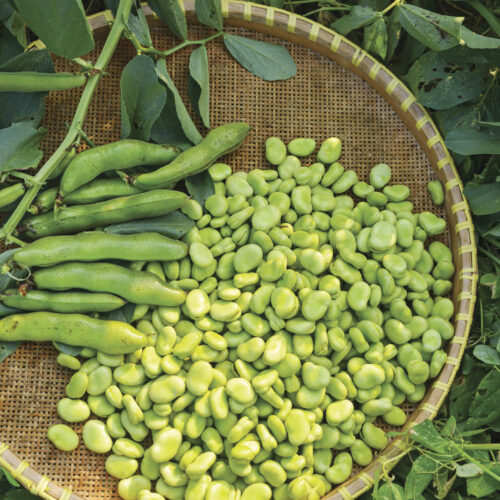Betony
2021-07-12T01:01:24+10:00
Planting betony in your garden will add to the flowers you have on offer provide nectar for bees, butterflies and beneficial insects.
The old Spanish saying, ‘He has as many virtues as betony’ reflects the once wide-ranging uses of this attractive plant. Betony (Betonica officinalis syn. Stachys officinalis) is a tough and versatile herb that grows as a compact clump of pebbly, dark green leaves. From this clump grow stalks with pairs of opposite smaller leaves. In summer, towards the top, whorls of reddish-purple flowers occur, just above the leaf pairs, with a dense group of flowers at the top of the spike. There are also cultivars with white flowers and various shades of pink. You’ll notice that the photo above uses the older Botanical name for betony. It was taken a few years ago in the lovely Adelaide botanic gardens, before the recent name change.
Historically betony was used to staunch bleeding and heal wounds. One of my favourite fictional characters, Ellis Peters’ medieval monk Brother Cadfael, always turned to betony (he called it woundwort) when treating a wound. According to the 11th century herbalist, Apuleius, betony was effective against ‘monstrous nocturnal visions’. In the Middle Ages it was believed to possess magical powers and was worn as a woven armband and planted in churchyards to ward off evil spirits.
Most books will tell you that betony does best in full-sun but I find in Australia that it thrives in dappled shade, in a humus-rich, sandy loam soil with some moisture. It doesn’t do well in an open position in our hot dry summers but it does cope well with my heavier slightly acid soil. Generally, betony does best in warm to cool temperate regions where it will tolerate temperatures well below zero, but it will also grow in the sub-tropics and mountainous regions of the tropics.
Betony is most easily grown by dividing an existing clump in spring or autumn, then replanting into a pot or straight back into the garden. It can also be grown from fresh seed sown in spring or autumn, although seed can take several weeks to germinate. Alternatively buy a pot. The only other care plants need is to cut back the dead flower heads and any old growth in autumn and protect new growth from slugs and snails in spring.
Betony is a lovely low spreading ground cover that, when in flower, provides nectar for bees, butterflies and beneficial insects. It’s closely related to the well-known, drought tolerant ground cover, lamb’s ears (Stachys byzantina) and the less well-known Chinese artichoke (S. affinis) with caterpillar-like, edible tubers.
Leaves and flowering tops of betony make a delightful, lightly aromatic hot drink that is an excellent substitute for tea. Collect a small handful of leaves and flowering tops, place them into an infuser, cup or teapot and pour boiling water over the top. Leave to stand for a few minutes and then drink. The leaves and flowers also dry well for later use.
Apart from being a pleasant tasting tea, these days betony is used mainly to ease anxiety, migraine and indigestion, and to minimise the effects of a hangover. The tea, which is slightly astringent, can also be drunk to ease diarrhoea or gargled for a sore throat. Dried, betony is added to herbal cigarettes and snuff mixtures.
I love betony for its long history, and grow it for the refreshing tea and the bright cheerful flowers that attract a myriad of insects.






